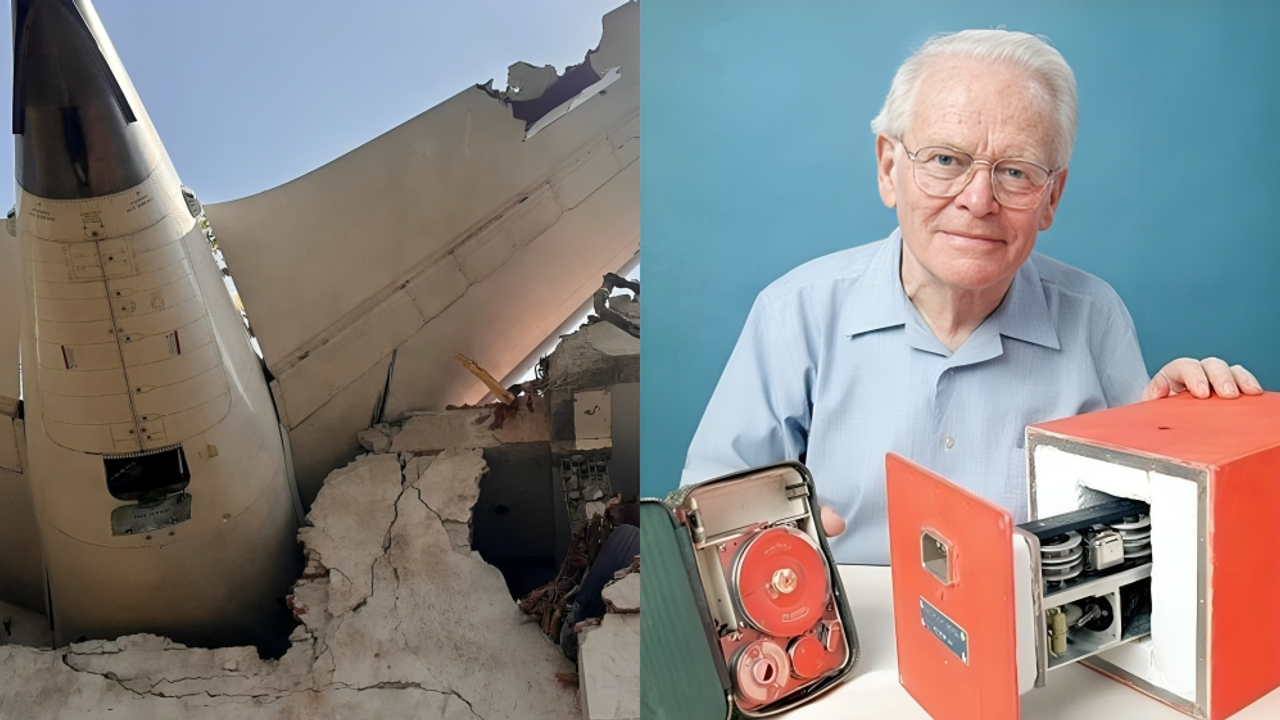A black box can reveal crucial clues behind aircraft accidents. As investigators search for the device in the Air India Ahmedabad crash, here’s a simple explainer on what black boxes are, how they work, and why they matter.
After the tragic crash of an Air India Boeing 787-8 Dreamliner in Ahmedabad, which claimed 241 lives and left one survivor, authorities are now racing to locate the plane’s black box, the single most important tool to understand what went wrong.

The black box: A vital clue in plane crash investigations
The Air India aircraft crashed just seconds after takeoff and burst into flames after hitting a doctors’ hostel. Investigators believe that crucial evidence lies in the black box that could help explain the disaster.
What is a black box?
The term "black box" refers to two devices: the Cockpit Voice Recorder (CVR) and the Flight Data Recorder (FDR). These devices are designed to record everything that happens in an aircraft before a crash, including technical data and pilot conversations.
What does each recorder do?
Cockpit Voice Recorder (CVR):
Cockpit Voice Recorder captures sounds in the cockpit, including pilot conversations, alarms, engine noises, and communication with air traffic control. Investigators use this audio to recreate the sequence of events during critical moments.
Flight Data Recorder (FDR):
Flight Data Recorder records technical flight data like altitude, speed, heading, engine performance, wing flap position, and over 1,000 other parameters. This data helps experts understand the aircraft’s condition and movements before the crash.
Why it’s not actually black
Despite the name, black boxes are bright orange to make them easier to find in wreckage or underwater. The nickname comes from computing, where a ‘black box’ system processes inputs and gives outputs but isn’t easily understood from the outside.
Can it survive a crash?
Yes. Black boxes are built using titanium or stainless steel and are designed to withstand:
- Extremely high impact forces
- Fires (over 1,100°C for up to one hour)
- Deep-sea pressure (up to 14,000 feet)
They're often placed in the tail section of the aircraft, statistically the least damaged part in crashes. Once retrieved, they undergo drying, cleaning (especially for saltwater), and data extraction.
Origins of the black box
The black box was invented in 1953 by Australian scientist David Warren. He developed the idea after investigating the crash of the Comet, the first commercial jet airliner.
Warren lost his own father in a plane crash in 1934, which inspired his work. His prototype came in 1956, but it took years for airlines to adopt the technology globally.
Can black boxes fail?
While black boxes are reliable, they’re not infallible:
- In some cases, critical data is wiped out, like in a 2024 Jeju Air crash.
- In the case of Malaysia Airlines Flight MH370, the black box was never found, and its signals went undetected.
India’s black box analysis capability
India recently inaugurated a Digital Flight Data Recorder and Cockpit Voice Recorder (DFDR & CVR) lab in Delhi. This facility helps in:
- Repairing damaged black boxes
- Extracting and analysing crash data
- Supporting investigations by the Aircraft Accident Investigation Bureau (AAIB)
In the Ahmedabad crash, authorities will heavily rely on Black Box to uncover what caused the aircraft to crash shortly after takeoff. The box could hold the key to understanding if mechanical failure, pilot error, or external factors were to blame. Experts may take 24-48 hours for preliminary findings, with complete analysis taking weeks.


